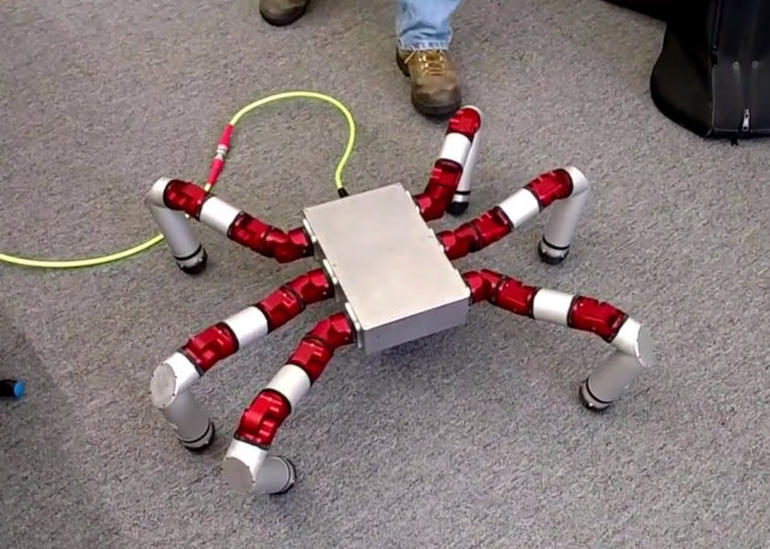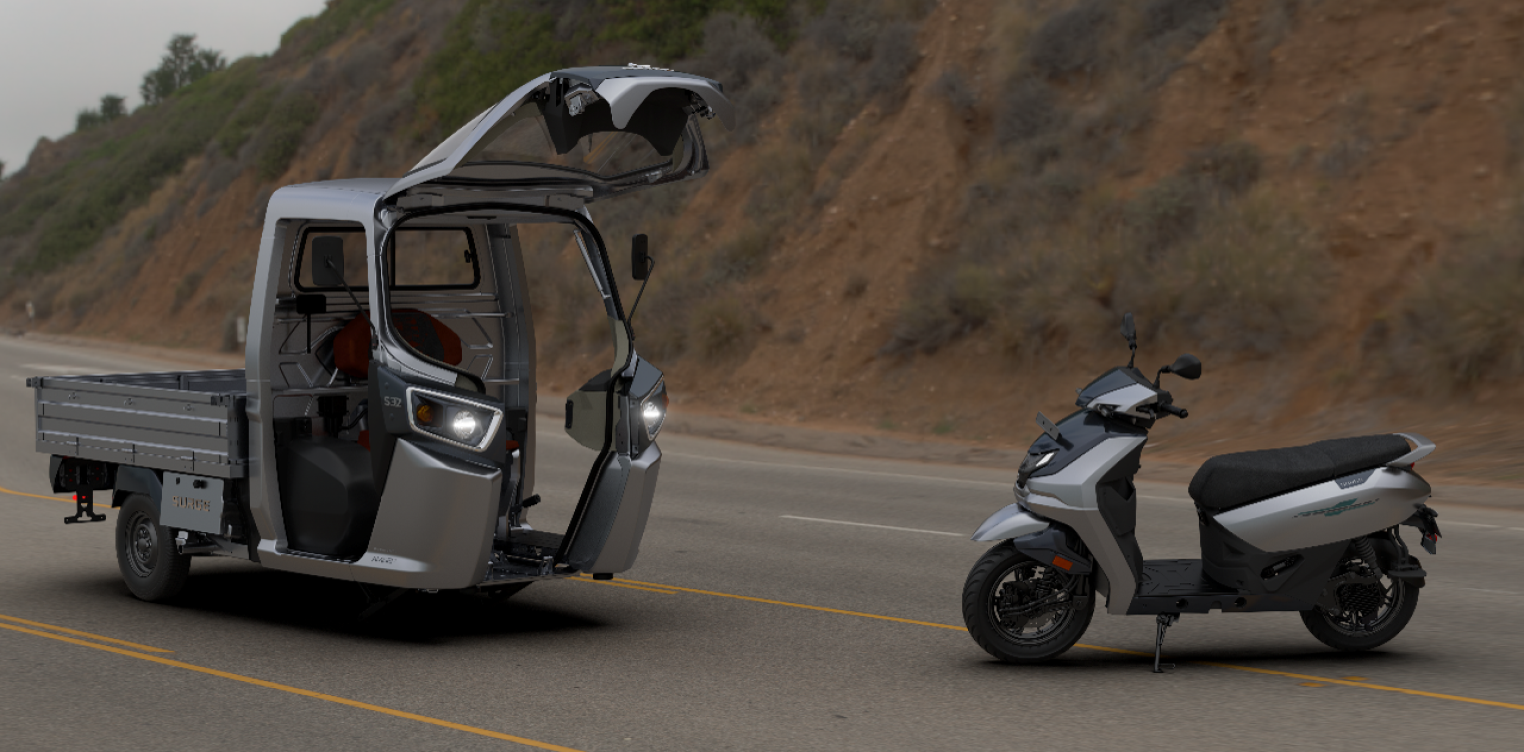The latest thing to come out of the Carnegie Mellon University (CMU) Biorobotics Laboratory is a robot called Snake Monster, even though the six-legged modular robot is more spider-like than it is snake.
The creepy robot crawls around smoothly and can easily maneuver over piles of debris and other terrain that would be difficult for less agile robots.
In the video below, you can see why modular robots made up of interconnecting parts are becoming more and more popular because they are easy to put together and can be used for a wide variety of applications.
Snake Monster robot is a hexapod, featuring six legs connected to a rectangular body. It walks around at all times with three of its legs in the air—two on one side and one on the other—while the others are on the ground, a technique called an alternating tripod gait.
A series elastic actuator helps the robot keep its balance when pushed, which is essentially a motor that allows Snake Monster to stabilize itself without the need for human intervention.
Lead investigator Howie Choset, a robotics professor at CMU, said, “When the robot goes over bumpy terrain, the springs in the series elastic actuators allow us to not perfectly plan the footsteps, but rather let the mechanism conform to the environment the way animals do.”
The research for this particular robot is being funded by the Maximum Mobility and Manipulation (M3) program under DARPA and Snake Monster is slated to be demonstrated in June 2015 at the DARPA Rescue Challenge.
The goal of the M3 program is to design and produce robots capable of moving and manipulating objects in real-world environments.







